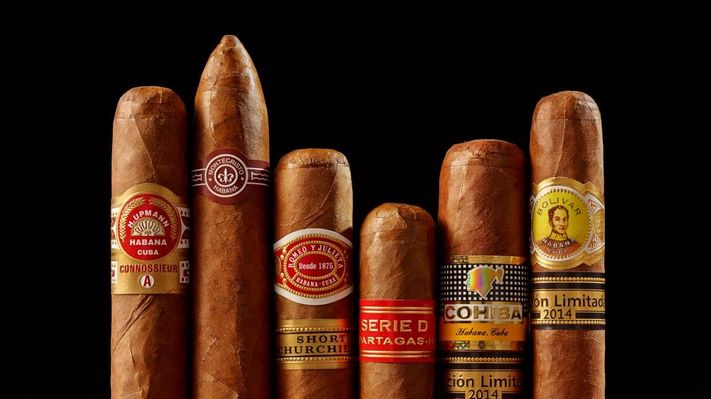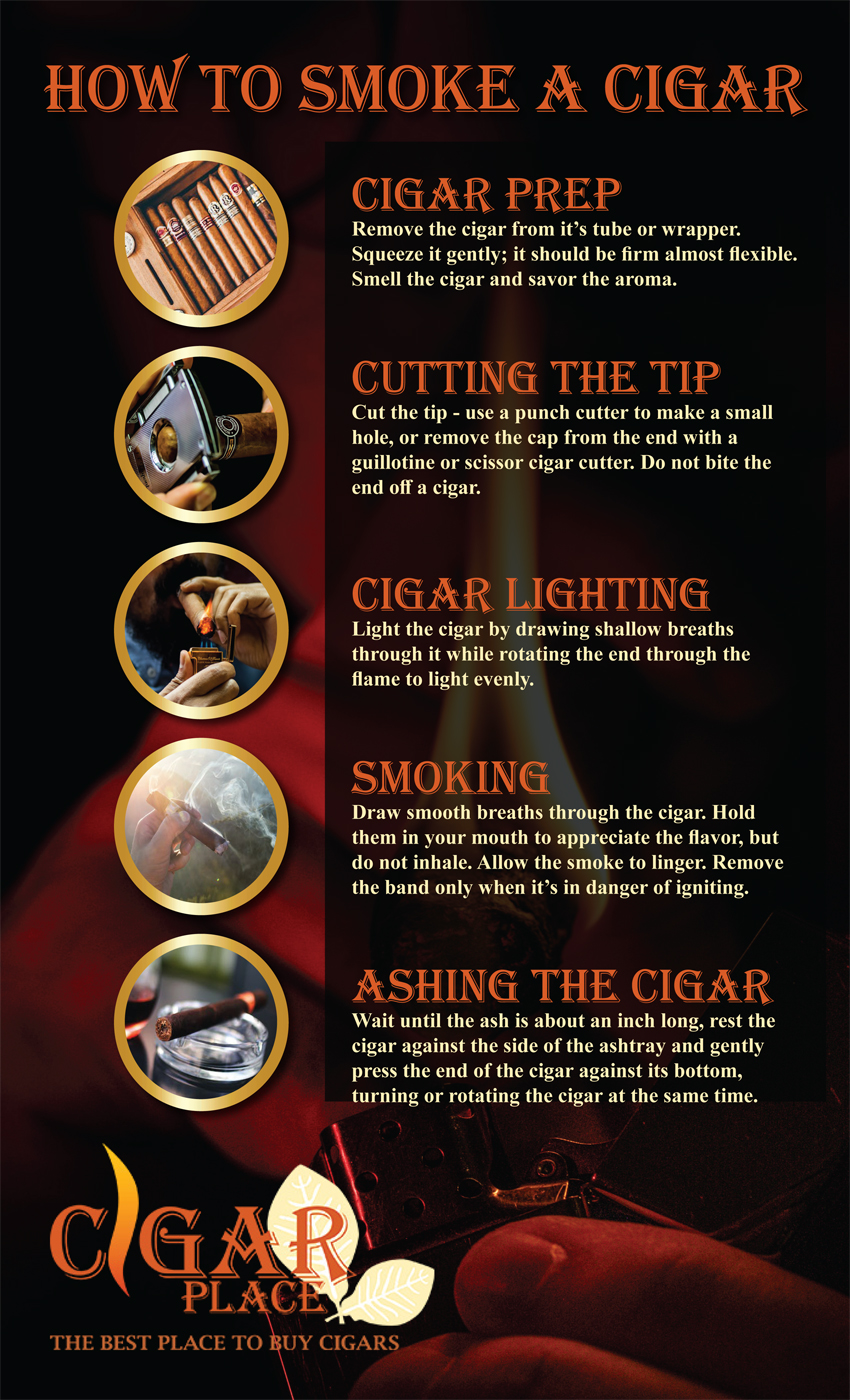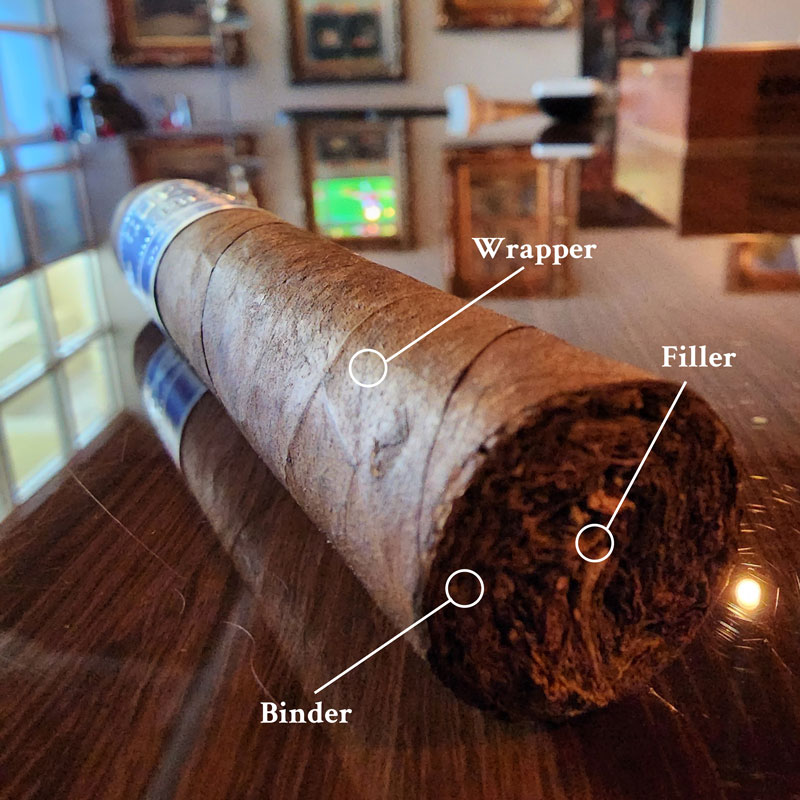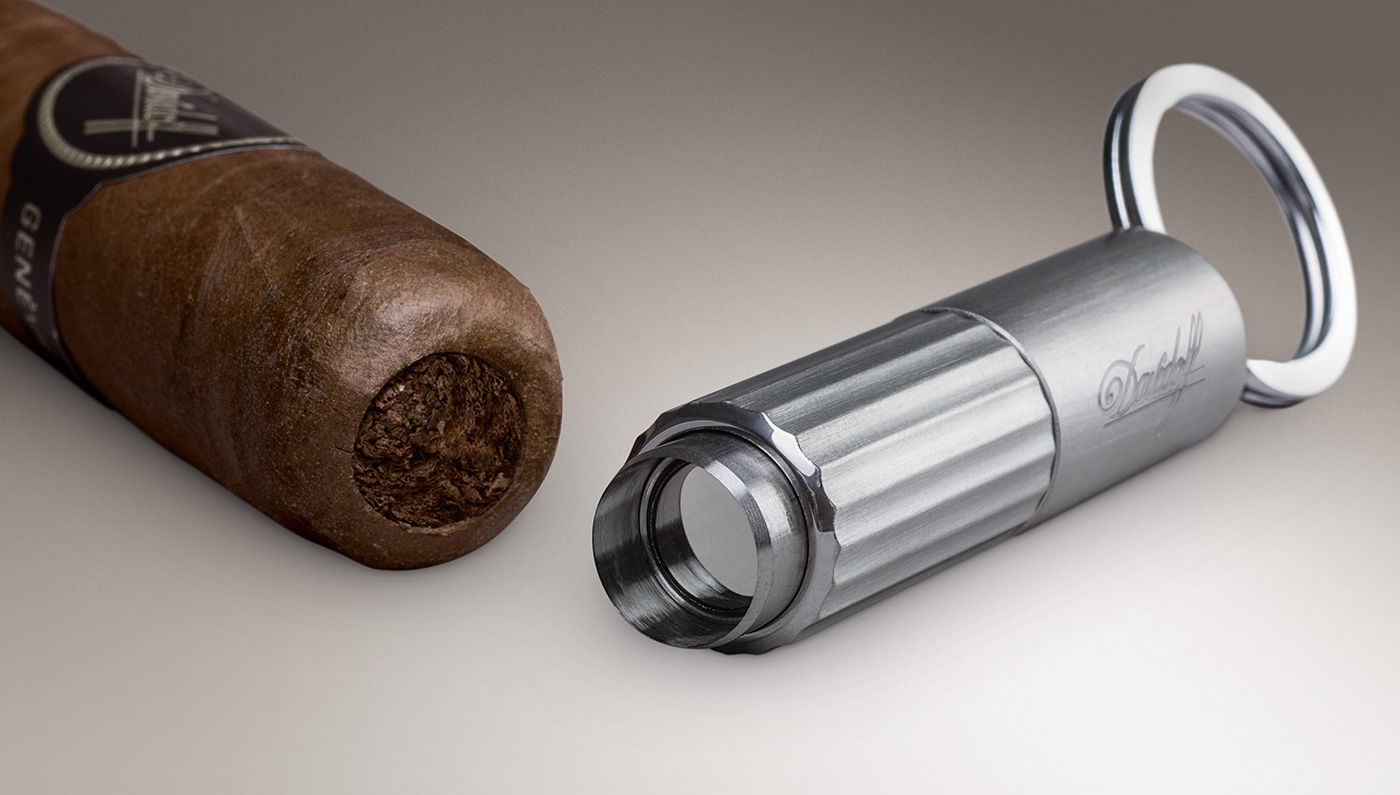>
The Essence of an Authentic Makes Cuban Cigar so special – A Journey into the Exquisite World of Premium Tobacco
Cuban cigars are revered around the world for their exceptional quality and craftsmanship. Made from the finest tobacco leaves, they have become a symbol of luxury and sophistication. If you are a cigar aficionado or simply curious about this iconic product, here is everything you need to know about Cuban cigars.
Origins and history:
Cuba has a long and storied history when it comes to cigar production. The island’s unique climate and soil conditions create the perfect environment for growing tobacco. The art of cultivating and rolling cigars has been passed down through generations, resulting in a tradition that is deeply ingrained in Cuban culture.
Characteristics and flavors:
What sets Cuban cigars apart from others is their distinct flavor profile. They are known for their rich, earthy taste with hints of spice and sweetness. The flavor intensifies as the cigar is smoked, offering a complex and satisfying experience. Cuban cigars also have a unique aroma that adds to the overall enjoyment.
Authenticity and packaging:
Due to their popularity, Cuban cigars have unfortunately become a target for counterfeiters. To ensure authenticity, look for the official Habanos seal on the box and the individual cigars. Each cigar is carefully packaged in wooden boxes, often adorned with intricate designs and labels indicating the brand and vitola (size and shape).
Smoking etiquette:
Smoking a Cuban cigar is not just about the act itself; it is also about the experience and the social ritual that surrounds it. It is customary to cut the cap before lighting, using a specialized cigar cutter. The cigar should be smoked slowly and savored, allowing the flavors to develop. It is considered impolite to ash a cigar unnecessarily or to extinguish it by crushing it.
Whether you are new to the world of cigars or a seasoned enthusiast, exploring the world of Cuban cigars is an enriching and rewarding endeavor. From their fascinating history to their exquisite flavors, there is much to discover and appreciate about these legendary smokes.
The History of Cuban Cigars
Cuban cigars have a rich and storied history that spans centuries. They are known for their exceptional quality, craftsmanship, and distinctive flavor. Here is a brief overview of the fascinating history behind Cuban cigars.
Origins in the 16th century
The origins of Cuban cigars can be traced back to the 16th century when Christopher Columbus and his crew were introduced to tobacco by the indigenous people of the Americas. The Spanish conquistadors, who established settlements in Cuba, quickly recognized the value of tobacco and began cultivating it.
Initially, tobacco was mostly consumed in the form of pipes, but over time, the practice of rolling tobacco leaves into cigars emerged. The Spanish settlers in Cuba were quick to embrace this new smoking method, and it soon became popular throughout the island.
Boom in the 19th century
In the 19th century, the Cuban cigar industry experienced a major boom. The combination of ideal climate, fertile soil, and skilled workers led to the production of some of the finest cigars in the world. Cuban cigars gained international recognition and became highly sought after by smokers around the globe.
Cuba’s tobacco industry flourished during this period, with numerous tobacco plantations and cigar factories sprouting across the island. Havana, the capital city of Cuba, became known as the heart of the cigar industry, producing the most prestigious and coveted cigars in the world.
Decline and recent resurgence
The Cuban cigar industry faced several challenges in the 20th century, including political upheaval, periods of economic instability, and the trade embargo imposed by the United States. These factors had a significant impact on the industry, but the Cuban cigar’s reputation remained strong despite these difficulties.
In recent years, the Cuban cigar industry has seen a resurgence as restrictions have eased, and demand for their products has increased. Smoking a Cuban cigar has become a symbol of luxury and prestige, and aficionados from around the world seek out these coveted smoking experiences.
Today, Cuban cigars continue to be revered for their unrivaled quality and traditional craftsmanship. The heritage and expertise that have been passed down through generations make Cuban cigars a true symbol of Cuba’s rich cigar-making history.
The Cultivation of Cuban Tobacco
Cuba is known worldwide for producing some of the finest cigars, and it all starts with the cultivation of Cuban tobacco. The island’s unique climate and rich fertile soil create the perfect conditions for growing tobacco plants.
One of the most important factors in the cultivation of Cuban tobacco is the use of seedbeds. Farmers carefully select the best seeds and plant them in these specially prepared beds. These seedbeds provide the ideal environment for the seeds to germinate and grow into healthy seedlings.
Once the seedlings are ready, they are transplanted into the fields. This process requires careful attention to detail, as each seedling needs to be placed in the right spot to ensure optimal growth. The fields are meticulously maintained, with farmers constantly monitoring the plants’ health and making adjustments as needed.
Another crucial aspect of the cultivation process is the use of shade-grown tobacco. This method involves growing the tobacco plants under shade cloths, protecting them from excessive sunlight. This technique helps to enhance the flavor of the tobacco leaves and produces a smoother smoking experience.
The harvesting of Cuban tobacco is done by hand, ensuring that only the best leaves are selected. Workers carefully remove the leaves from the plants, taking care to avoid any damage. These leaves are then sorted and classified based on their size, color, and texture.
After harvest, the tobacco leaves undergo a fermentation process. This process helps to develop the complex flavors and aromas that are characteristic of Cuban cigars. The leaves are stacked in special curing barns and left to ferment for a predetermined period, during which time they undergo chemical changes that contribute to their unique qualities.
Once the fermentation process is complete, the tobacco leaves are ready to be used in the production of cigars. Master cigar rollers work their magic, skillfully rolling the leaves into the desired shape and size. These cigars are then aged for a period of time, allowing the flavors to mature and develop.
In conclusion, the cultivation of Cuban tobacco is a meticulous and time-consuming process. From seedbeds to fermentation, every step of the process contributes to the creation of the world-renowned Cuban cigars. It is this attention to detail and dedication to quality that sets Cuban cigars apart from the rest.
The Making of Cuban Cigars
Creating a Cuban cigar is a meticulous and time-honored process that requires the expertise of skilled craftsmen. From cultivation to rolling and aging, each step plays a crucial role in producing the iconic cigars that are beloved worldwide.
The journey of a Cuban cigar begins with the cultivation of tobacco leaves. The fertile soil and ideal climate found in Cuba provide the perfect conditions for growing premium tobacco. The tobacco plants are carefully cultivated, with each leaf being hand-picked when it reaches its optimal maturity.
Once the tobacco leaves are harvested, they undergo a complex fermentation process. This process helps develop the unique flavors and aromas that Cuban cigars are famous for. The leaves are carefully stacked and left to ferment in carefully controlled conditions, where they gradually release excess moisture and undergo chemical changes.
After fermentation, the leaves are sorted by their quality and strength. Only the finest leaves make the cut, as these will be used for the cigar’s filler, binder, and wrapper. The filler leaves give the cigar its flavor, while the binder holds the filler together, and the wrapper is the outermost leaf that adds to the overall appearance and flavor.
Skilled rollers, known as torcedores, are responsible for transforming the specially selected leaves into cigars. These individuals undergo intensive training to perfect the art of cigar rolling. Using their deft hands and keen eyes, the torcedores roll the filler leaves into a cylindrical shape and carefully wrap them with the binder leaf. The final touch is the application of the wrapper, which is done with precision and expertise.
After rolling, the cigars go through a maturation process called aging. During this time, which can range from several months to years, the cigars are stored in special rooms called humidors. The aging process allows the flavors and aromas to meld together, resulting in a smoother and more refined smoking experience.
Once the cigars have undergone sufficient aging, they are inspected one final time to ensure quality and consistency. Only then are they packaged and prepared for distribution around the world, where they are eagerly awaited by cigar aficionados.
In conclusion, the making of Cuban cigars is a laborious, yet intricate process that requires a deep understanding of tobacco and skillful craftsmanship. From the cultivation of tobacco leaves to the rolling and aging stages, every step is essential in crafting the legendary cigars that have become synonymous with Cuban culture and luxury.
The Unique Flavors of Cuban Cigars
When it comes to cigars, Cuban cigars are often considered to be the best in the world. One of the reasons for their esteemed reputation is the unique flavors they offer. Cuban cigars have a distinct taste profile that sets them apart from cigars produced in other countries.
One of the factors that contribute to the unique flavors of Cuban cigars is the terroir in which the tobacco is grown. Cuba’s fertile soil and ideal climate provide the perfect conditions for growing tobacco. The combination of volcanic soil, warm temperatures, and high humidity result in tobacco leaves that are rich in flavor and aroma.
Another element that adds to the distinct flavors of Cuban cigars is the traditional methods used in their production. The curing and fermentation processes are carefully controlled and can take up to three years to complete. This time-consuming process allows the tobacco to develop complex flavors and aromas that cannot be replicated.
Cuban cigars are also known for their smoothness and balance. The blending of different types of tobacco, including filler, binder, and wrapper leaves, is done with precision to create a well-balanced cigar. The unique combination of flavors from different tobacco varieties results in a harmonious smoking experience.
One of the most iconic flavors found in Cuban cigars is the earthy and leathery taste. This flavor is often associated with aged tobacco leaves and is highly sought after by cigar enthusiasts. Other common flavors found in Cuban cigars include woody notes, spice, and hints of sweetness.
It’s important to note that the flavors of Cuban cigars can vary depending on the brand, the specific blend, and even the size of the cigar. Each brand has its own unique flavor profile, giving cigar aficionados a wide range of options to explore.
In conclusion, the unique flavors of Cuban cigars are a result of the perfect combination of terroir, traditional production methods, and expert blending. From earthy and leathery notes to woody and spicy flavors, Cuban cigars offer a distinctive and unforgettable smoking experience.
The Different Sizes and Shapes of Cuban Cigars
Cuban cigars are known for their quality and craftsmanship, but they also come in a variety of sizes and shapes. Each size and shape offers a unique smoking experience, allowing cigar enthusiasts to find their perfect match. Here are some of the most popular sizes and shapes of Cuban cigars:
- Corona: This is a classic size, typically measuring around 5.5 to 6 inches long with a ring gauge of 42 to 44. The Corona is known for its balanced flavor and medium strength.
- Toro: A Toro cigar is a bit thicker and longer than a Corona, usually measuring around 6 to 6.5 inches with a ring gauge of 48 to 52. It offers a full-bodied smoke with a longer smoking time.
- Robusto: The Robusto is a popular size, measuring around 4.5 to 5.5 inches with a ring gauge of 50 to 54. It is known for its compact size and bold flavor, making it a favorite among cigar enthusiasts.
- Churchill: Named after the famous British Prime Minister, the Churchill size measures around 7 to 7.5 inches with a ring gauge of 47 to 50. It offers a longer smoking time and a smooth, medium-bodied flavor.
- Panatela: The Panatela is a long and thin cigar, usually measuring around 6 to 7.5 inches with a ring gauge of 34 to 38. It offers a milder smoking experience and is perfect for those who prefer a more delicate flavor.
These are just a few examples of the sizes and shapes available in the world of Cuban cigars. Depending on your preference, you can choose a size that suits your smoking time and flavor profile. Whether you prefer a shorter, bolder smoke or a longer, milder one, Cuban cigars offer a wide range of options for every cigar aficionado.
The Art of Smoking a Cuban Cigar
Smoking a Cuban cigar is not just an act, it is an art. There is a certain etiquette and ritual involved in enjoying a Cuban cigar to its fullest. Here are a few key points to keep in mind:
- Selecting the Perfect Cigar: The first step in the art of smoking a Cuban cigar is selecting the perfect one. Look for cigars with even coloring, smooth texture, and a consistent shape. The aroma should be inviting, and the wrapper should be tightly wrapped without any visible imperfections.
- Preparing the Cigar: Before lighting your cigar, you need to prepare it properly. Use a cigar cutter to make a clean, straight cut about 1/8 inch from the end. Be sure not to cut too much or too little, as it can affect the draw and overall smoking experience.
- Lighting the Cigar: Lighting a Cuban cigar is an art in itself. Use a wooden match or a butane lighter to gently toast the foot of the cigar, rotating it to ensure an even burn. Once the foot is toasted, bring the flame closer and draw in gently while continuing to rotate. Avoid direct contact between the flame and the cigar.
- Enjoying the Smoke: Take your time while smoking a Cuban cigar. Savor the flavors and aromas by taking slow, steady draws. Hold the smoke in your mouth for a few seconds before exhaling through your nose and mouth. This will allow you to fully appreciate the complex flavors and enjoy the smoothness of the smoke.
- Pairing with a Drink: To enhance the experience, consider pairing your Cuban cigar with a complimentary drink. Traditional choices include aged rum, single malt whiskey, or a rich red wine. The pairing should enhance the flavors of both the cigar and the drink, creating a harmonious combination for your palate.
- Proper Ashing: As you smoke your Cuban cigar, be sure to ash it properly. Allow the ash to form naturally and tap it gently to prevent it from falling off prematurely. A long ash is considered a sign of a well-made cigar.
Remember, smoking a Cuban cigar is more than just puffing smoke. It is a ritual that requires patience, attention to detail, and a deep appreciation for the craftsmanship that goes into creating these legendary cigars. So take your time, relax, and enjoy the art of smoking a Cuban cigar.
The Role of Cuban Cigars in Cuban Culture
Cuba is famous worldwide for its cigars, and they hold a unique place in Cuban culture. Cigars are not just a product but a symbol of identity and tradition for the Cuban people.
|
Symbol of Sophistication: Cuban cigars are associated with luxury and refinement. They are often seen as a status symbol and a mark of sophistication. Smoking a Cuban cigar is a way to demonstrate one’s taste and appreciation for the finer things in life. |
Economic Importance: The cigar industry is a vital part of the Cuban economy. Cigar production provides employment to many Cubans and generates significant revenue for the country. Cuban cigars are highly sought after, attracting tourists and cigar enthusiasts from around the world. |
|
Ritual and Tradition: In Cuban culture, smoking cigars is not just a casual activity but a ritual. The process of preparing and smoking a cigar is considered an art form. It involves carefully selecting, cutting, and lighting the cigar, and taking the time to savor the flavors and aromas. Cigars are often enjoyed during special occasions or social gatherings. |
Social Bonding: Cigars play a significant role in social interactions in Cuba. Sharing a cigar is a way to establish connections, build relationships, and strengthen bonds. It is common to see people gathered in cigar lounges or on the streets, engrossed in conversation while enjoying their favorite cigars. |
|
Cultural Heritage: Cuban cigars are deeply rooted in the country’s history and have become a symbol of its cultural heritage. The art of cigar making has been passed down through generations, with master craftsmen preserving traditional techniques. Cuban cigars are known for their exceptional quality, and their production is closely regulated to maintain the integrity of this cultural heritage. |
National Pride: Cuban cigars are a source of national pride for the Cuban people. They are considered the best cigars in the world, and the country’s reputation is closely tied to them. Cuban cigars have become synonymous with the Cuban identity and serve as a reminder of the country’s rich history and traditions. |
In conclusion, Cuban cigars are more than just a product; they are a symbol of Cuban culture, tradition, and national identity. The role of Cuban cigars in Cuban culture is multifaceted, encompassing luxury, economic importance, ritual, social bonding, cultural heritage, and national pride.
Tips for Buying Authentic Cuban Cigars
When it comes to buying authentic Cuban cigars, it is important to be knowledgeable and cautious. Due to their popularity, many counterfeit cigars are sold on the market. To ensure you are getting a genuine Cuban cigar, follow these tips:
1. Purchase from an Authorized Dealer
One of the safest ways to buy authentic Cuban cigars is to purchase them from an authorized dealer. Look for official Habanos S.A. retailers or certified cigar shops authorized to sell Cuban cigars. These dealers have undergone strict quality control and are more likely to offer genuine products.
2. Check the Packaging
Inspect the packaging of the cigars carefully. Authentic Cuban cigars come in elegant, sturdy boxes with distinct markings and seals. Look for the Habanos hologram, which is a guarantee of authenticity. The box should also have a serial number, a Cuban warranty seal, and the brand name printed clearly.
3. Examine the Cigar’s Construction
Quality Cuban cigars are handmade with attention to detail. Check the cigar’s construction by gently squeezing it. It should have an even consistency without any soft spots or lumps. The wrapper should be smooth and tightly rolled, with no visible imperfections.
4. Compare Prices
Be cautious of extremely low prices. Authentic Cuban cigars are known for their superior quality, and they come at a premium price. If a deal seems too good to be true, it probably is. Compare prices from different sources to get an idea of the average market value.
5. Seek Recommendations
When in doubt, seek recommendations from knowledgeable cigar enthusiasts or consult reputable online forums and communities. Experienced smokers can provide valuable insights and help you find trusted sources for authentic Cuban cigars.
By following these tips, you can increase your chances of buying authentic Cuban cigars that provide an exceptional smoking experience. Remember, the enjoyment of a genuine Cuban cigar lies not only in its taste but also in the knowledge that you are experiencing a piece of Cuban cigar history.
Q&A: What is a cuban cigar
Question: What is the origin of the Cohiba brand?
Answer: The Cohiba brand has its roots in Cuba and was created in 1966.
Question: Where are Cuban Cohiba cigars produced?
Answer: Cuban Cohiba cigars are handcrafted in several factories in Cuba.
Question: What is the Montecristo brand known for?
Answer: The Montecristo brand is known for its rich heritage and high quality, attracting enthusiasts from around the world.
Question: How is Fidel Castro connected to the Montecristo cigar brand?
Answer: Fidel Castro was a well-known fan of Montecristo cigars, which brought attention to the brand.
Question: Who founded the Montecristo cigar brand?
Answer: The Montecristo cigar brand was founded by Menendez and Garcia in Cuba in 1935.
Question: Where are Cuban Montecristo cigars produced?
Answer: Cuban Montecristo cigars are handcrafted in Cuba.
Question: What types of cigars does Hoyo de Monterrey produce?
Answer: The Hoyo de Monterrey brand offers various types of cigars, including Epicure No. 2 and Le Hoyo de San Juan.
Question: Which country is known for producing Hoyo de Monterrey cigars?
Answer: The Hoyo de Monterrey cigars are produced in Cuba.
Question: Which cigar brand is produced in the Dominican Republic?
Answer: Cigars of various brands, including Romeo y Julieta, are produced in the Dominican Republic.
Question: Which famous literary couple inspired the Romeo y Julieta cigar brand?
Answer: The Romeo y Julieta cigar brand was named after the famous literary couple from William Shakespeare’s play.
Question: What are the available options of Romeo y Julieta cigars for sale?
Answer: There are various options of Romeo y Julieta cigars available, such as Churchill, Petit Corona, and Wide Churchill.
Question: Where are Romeo y Julieta cigars produced?
Answer: Romeo y Julieta cigars are produced both in Cuba and in other countries like the Dominican Republic.
What makes Cuban cigars so special?
The unique combination of Cuban soil, climate, and tobacco cultivation techniques contribute to the exceptional quality and flavor of Cuban cigars.
Where can I buy Cuban cigars?
–
Cuban cigars can be purchased at authorized Cuban cigar retailers or specialty tobacco shops in countries where they are legally available.
Who is a famous Cuban cigar manufacturer?
Partagás is a renowned Cuban cigar manufacturer, known for producing some of the finest cigars in the world.
What is a Havana cigar?
A Havana cigar refers to a cigar that is made entirely from tobacco grown in Cuba and rolled by hand in Havana.
What makes premium cigars the cigars of the year?
Premium cigars are selected as cigars of the year based on their outstanding quality, flavor, construction, and overall smoking experience.
Where is the market for Cuban cigars?
The market for Cuban cigars extends worldwide, with demand coming from both cigar aficionados and casual smokers who appreciate their unique blend.
What are Cuban cigars made from?
Cuban cigars are made from tobacco leaves grown in Cuba, specifically in the region of Vuelta Abajo, known for its ideal soil and climate conditions.
How are Cuban cigars made?
Cuban cigars are hand-rolled by highly skilled craftsmen, who carefully select and combine tobacco leaves, roll them into a cylindrical shape, and finish them with a wrapper leaf.
What makes the flavor of a Cuban cigar distinct
The flavor of a Cuban cigar is influenced by the unique characteristics of Cuban tobacco, which has a rich, complex taste with notes of earthiness, sweetness, and spice.
What is the significance of Cuban soil in cigar production?
The soil in Cuba, particularly in the region of Pinar del Rio, is known to be exceptionally fertile and rich in nutrients, resulting in tobacco with exceptional flavor and quality.







